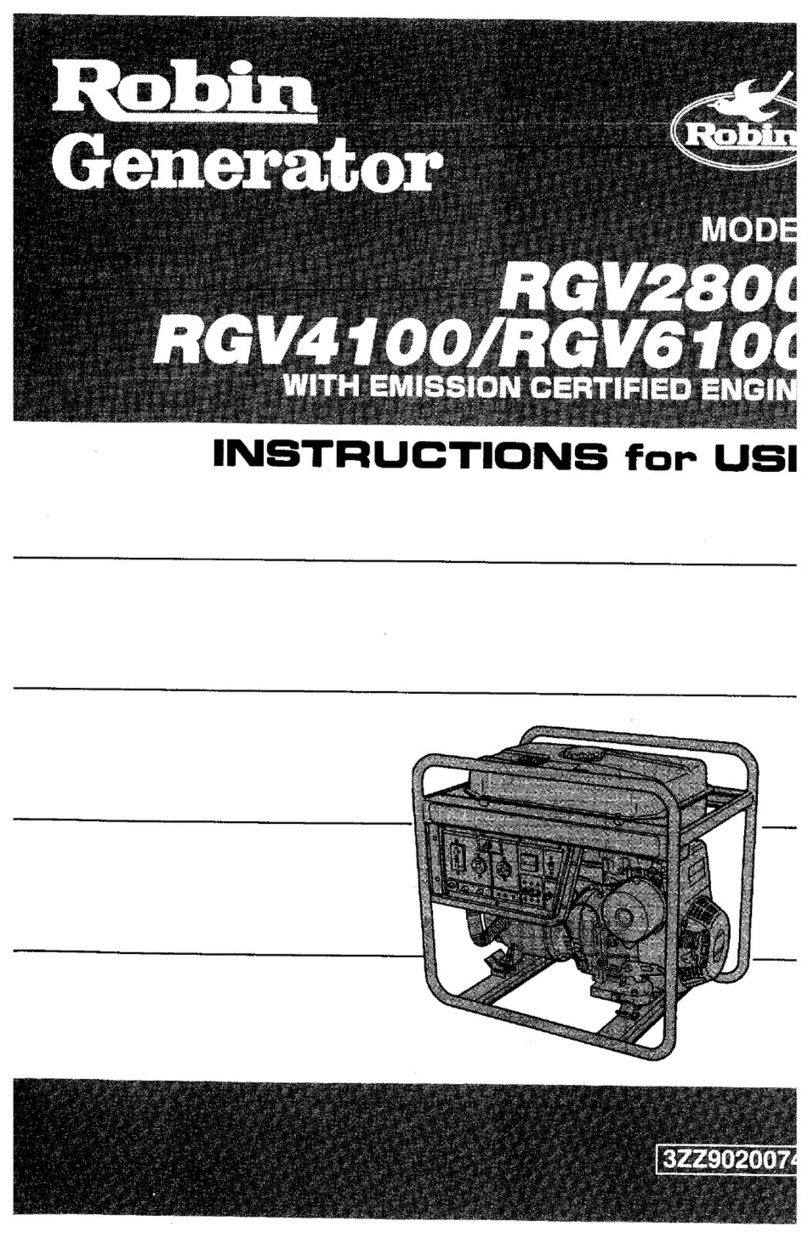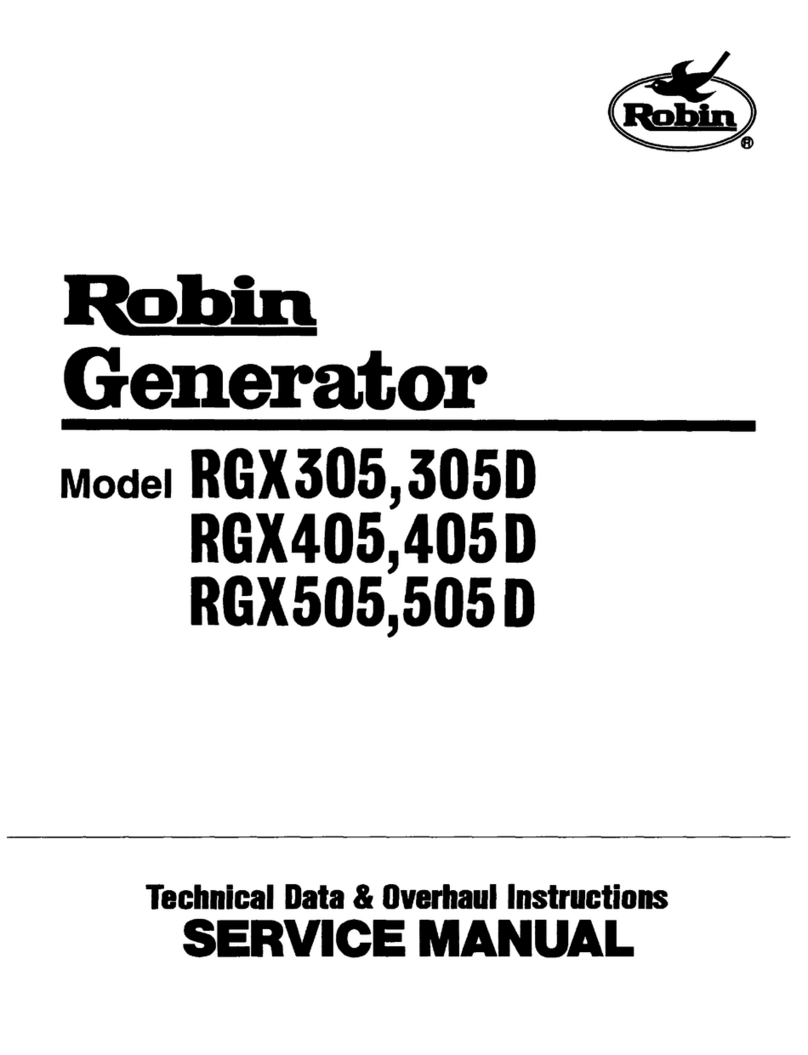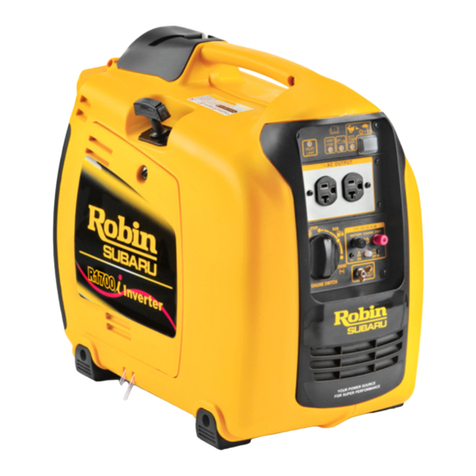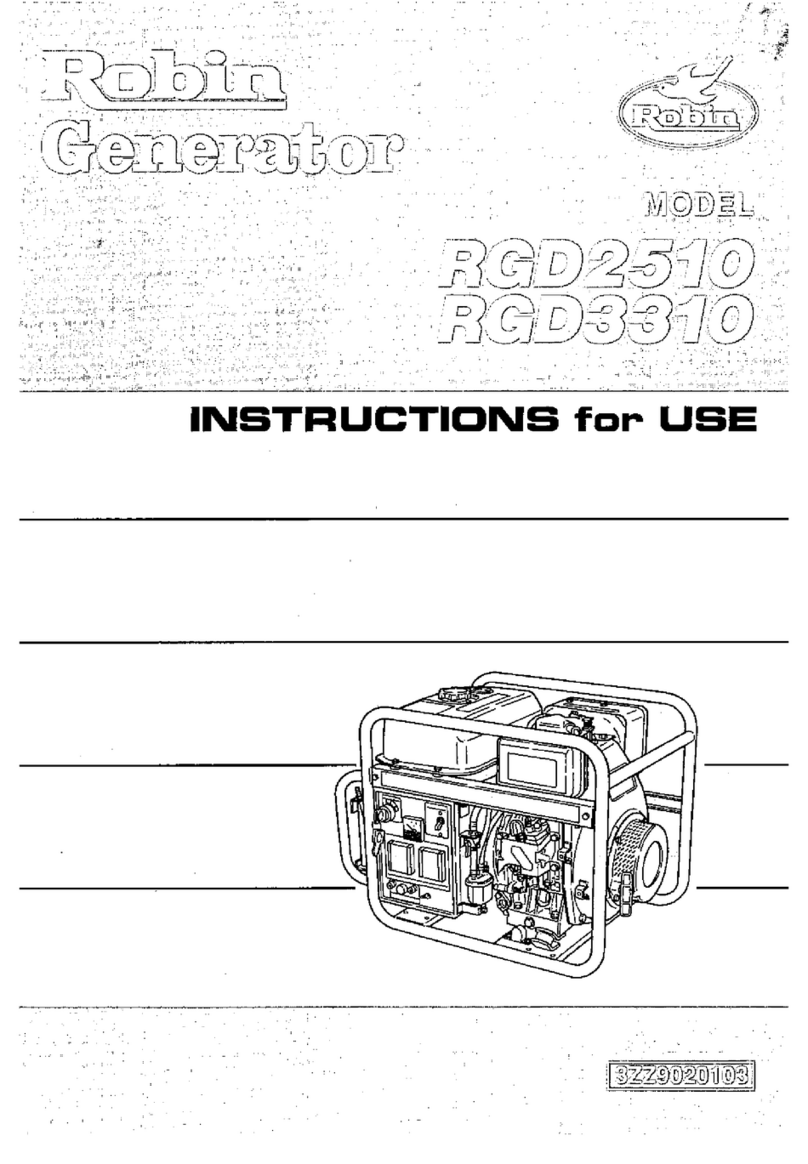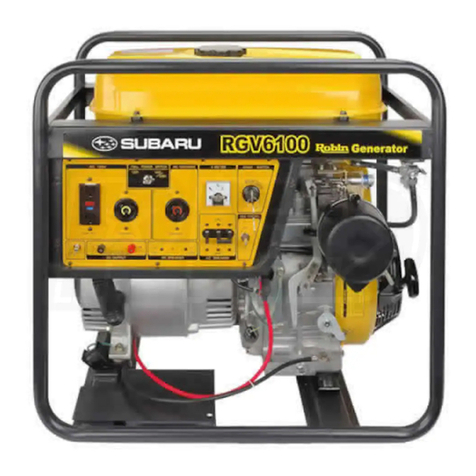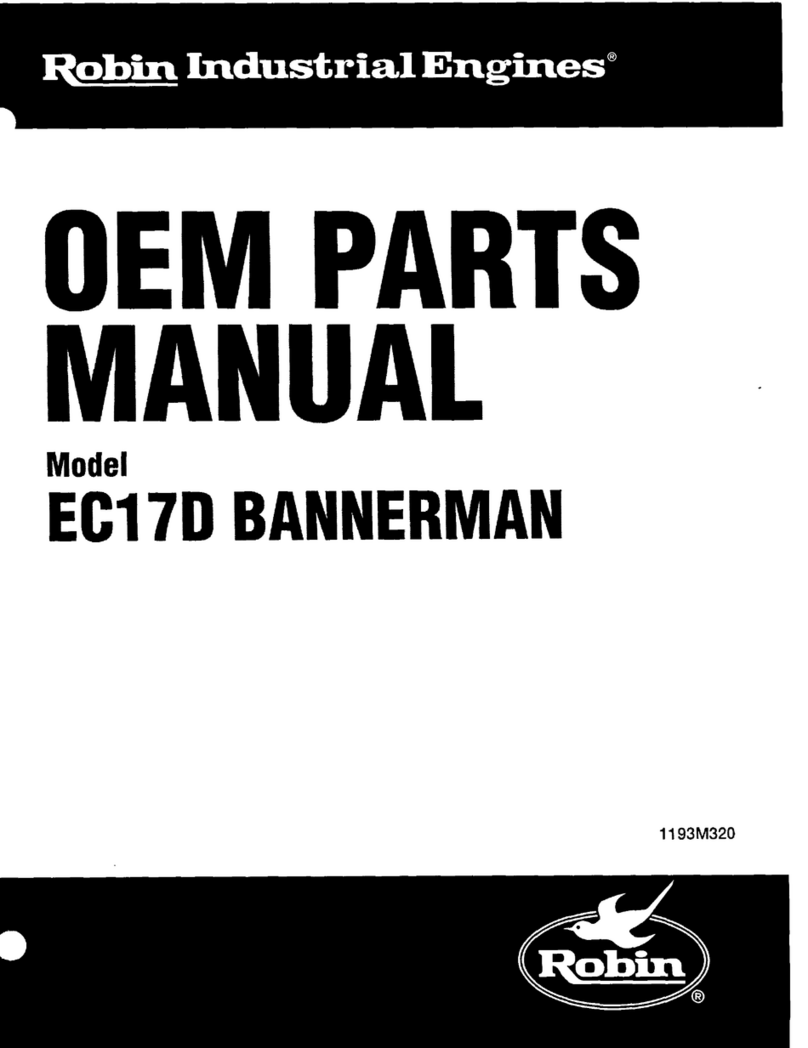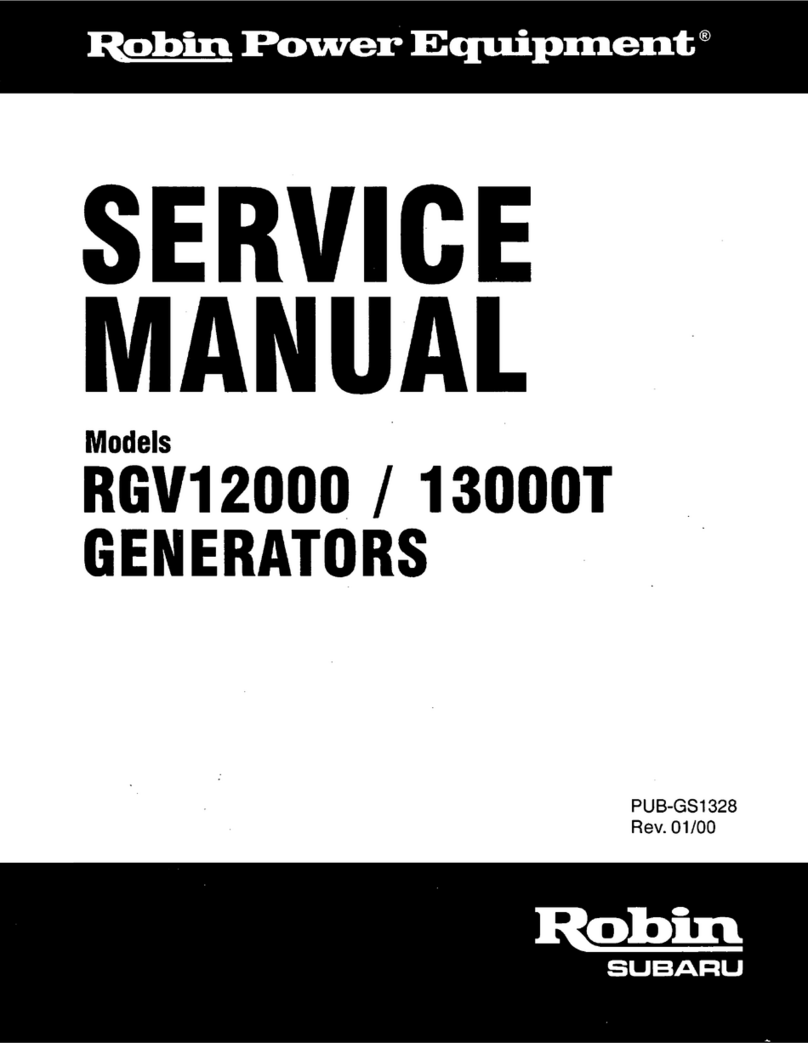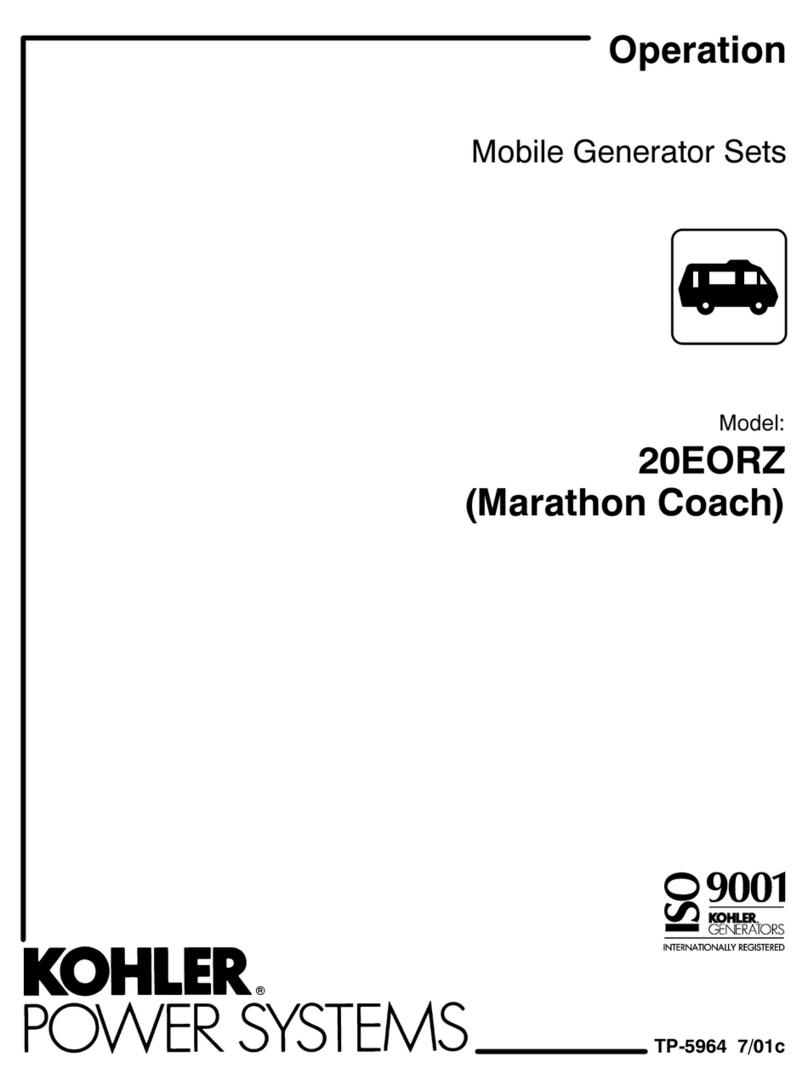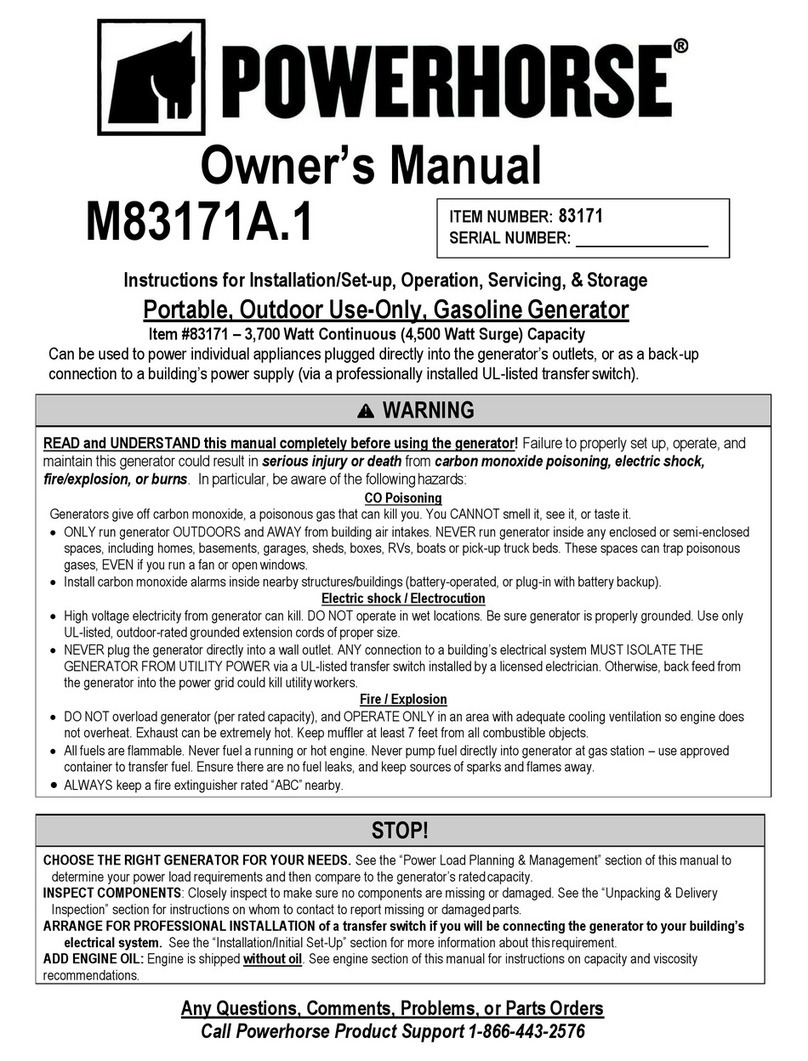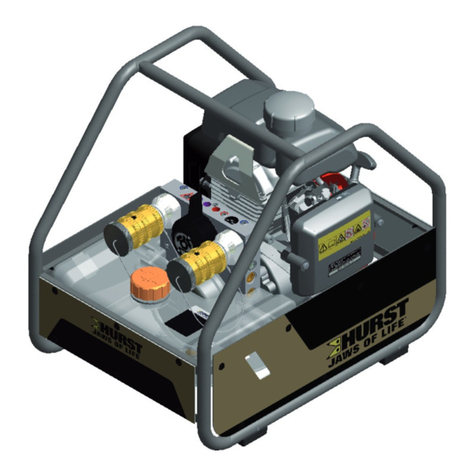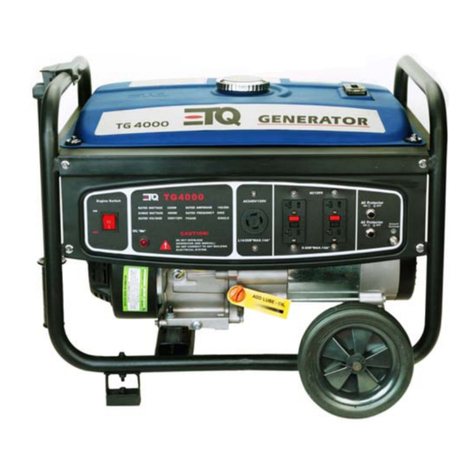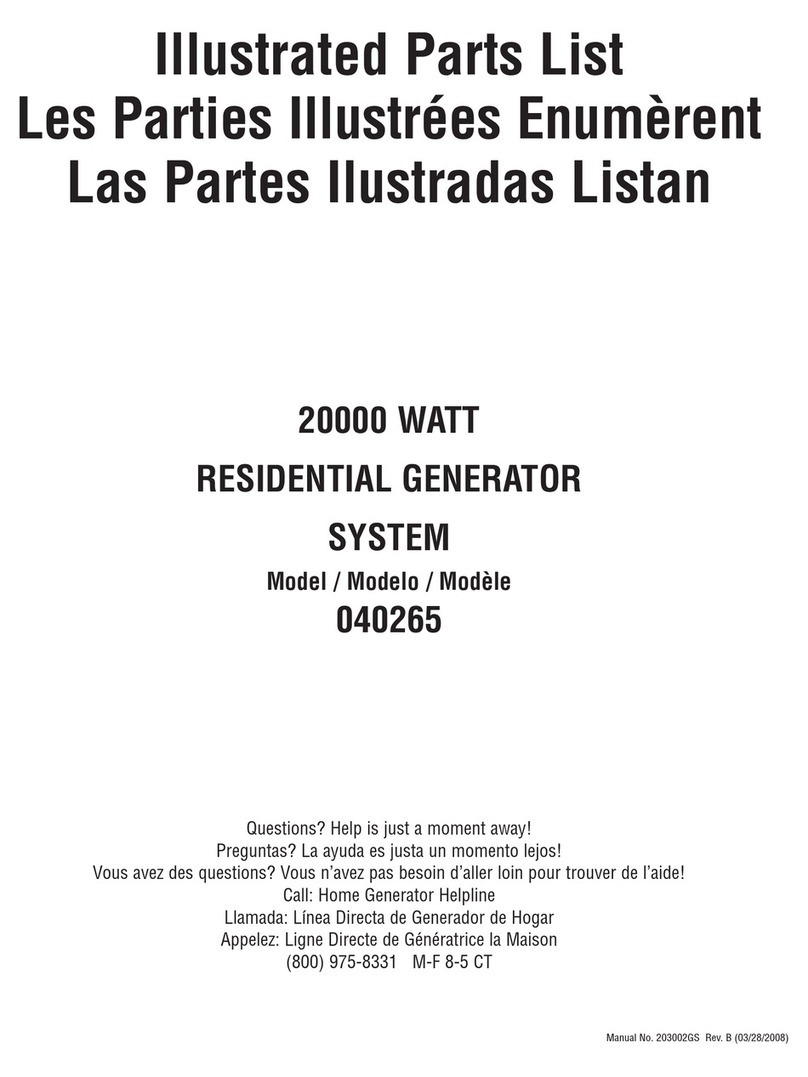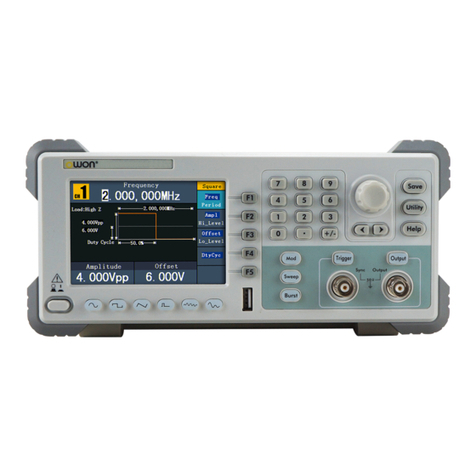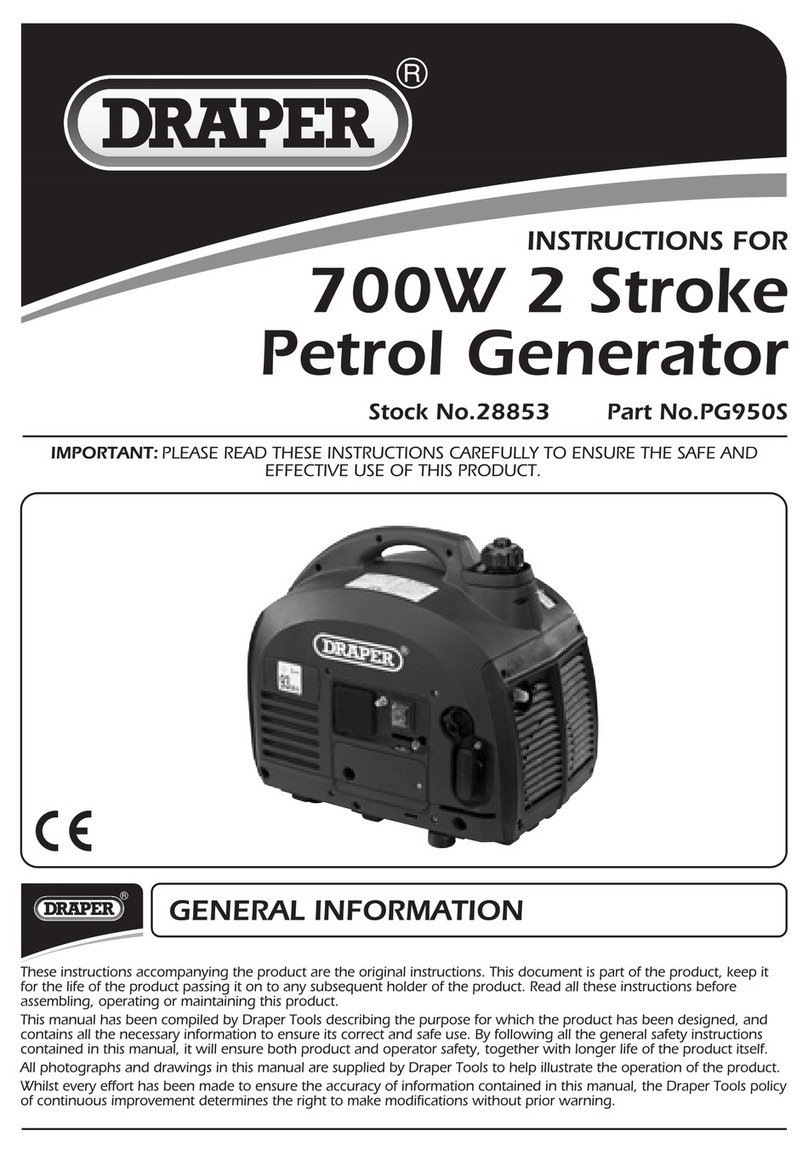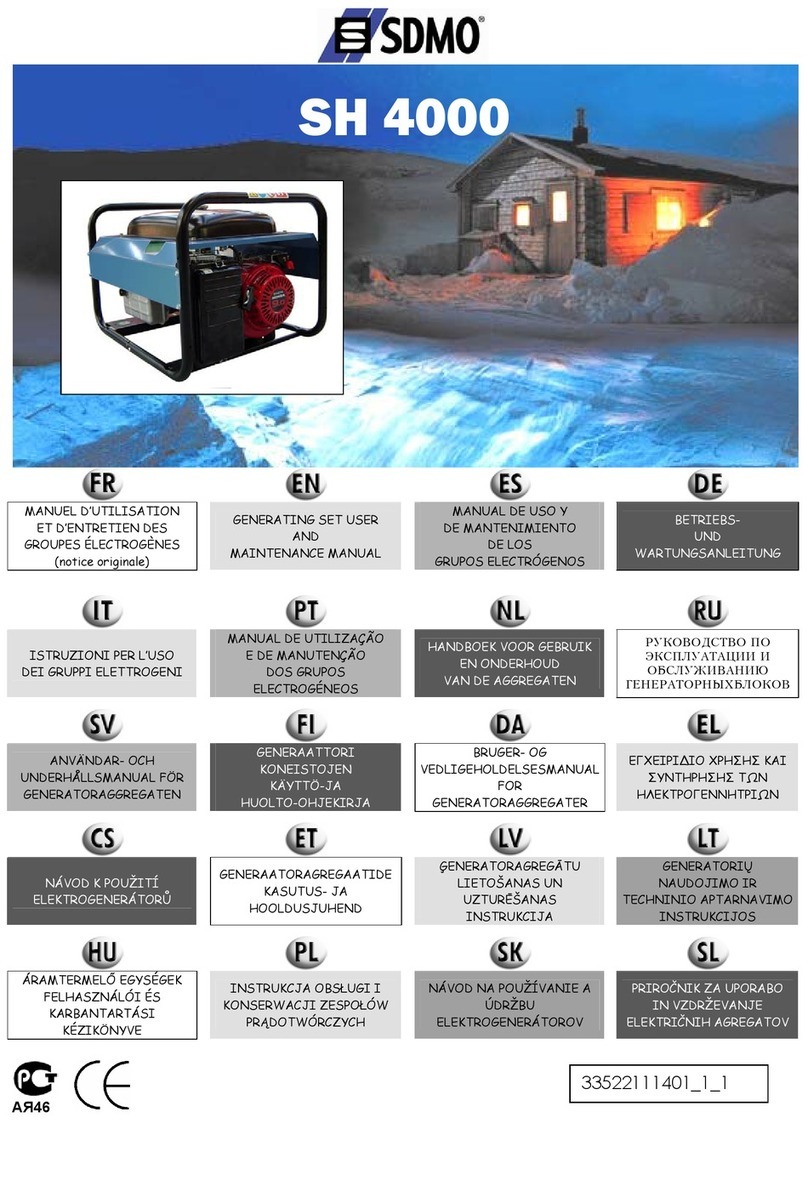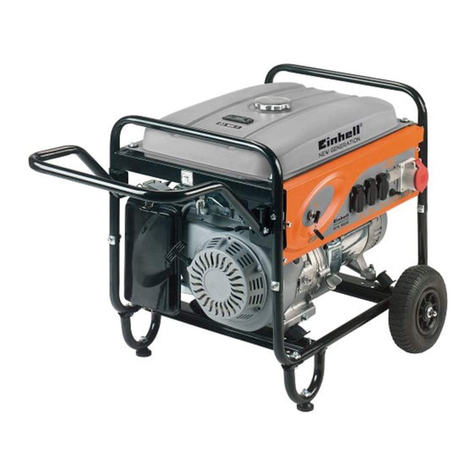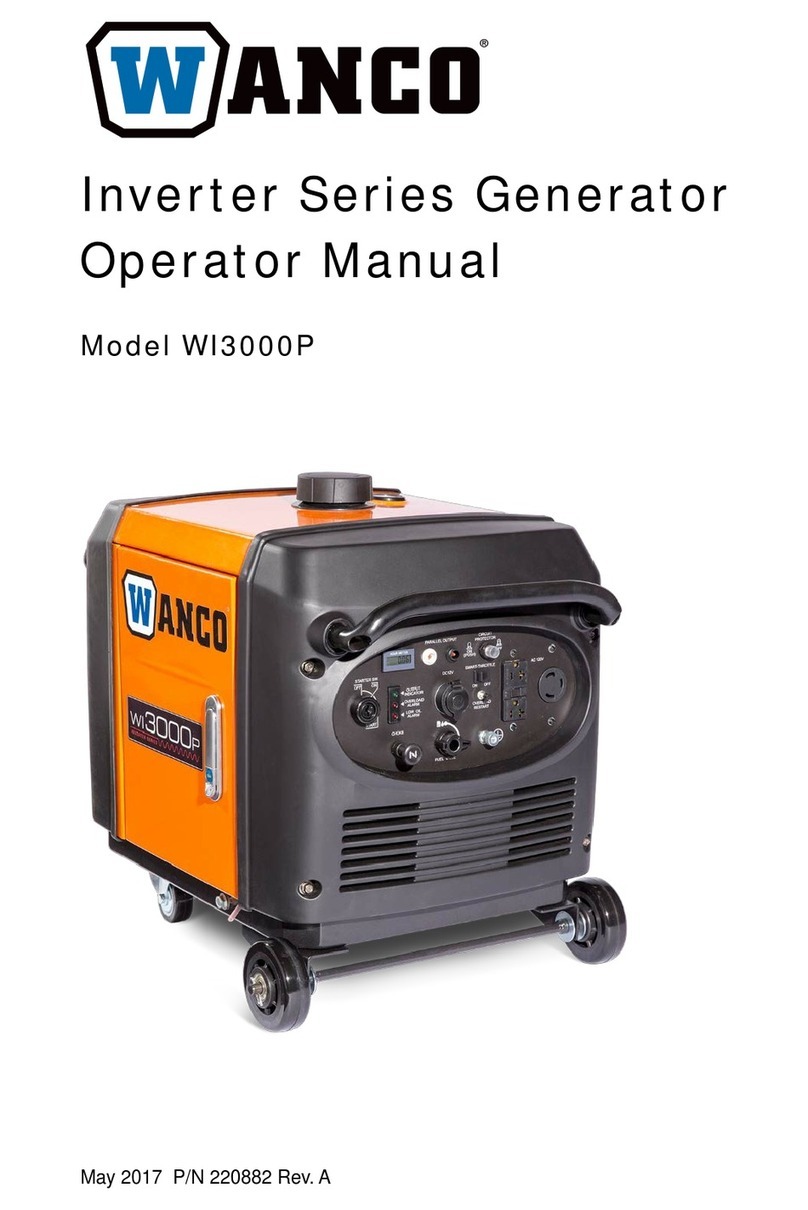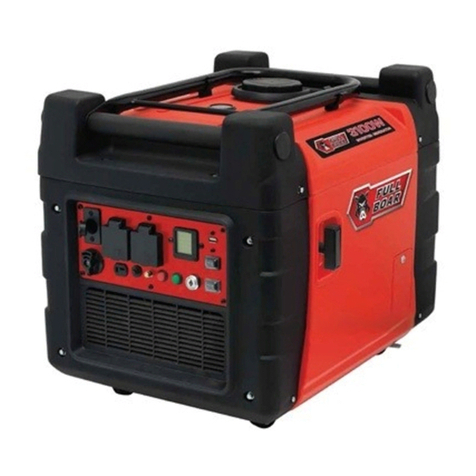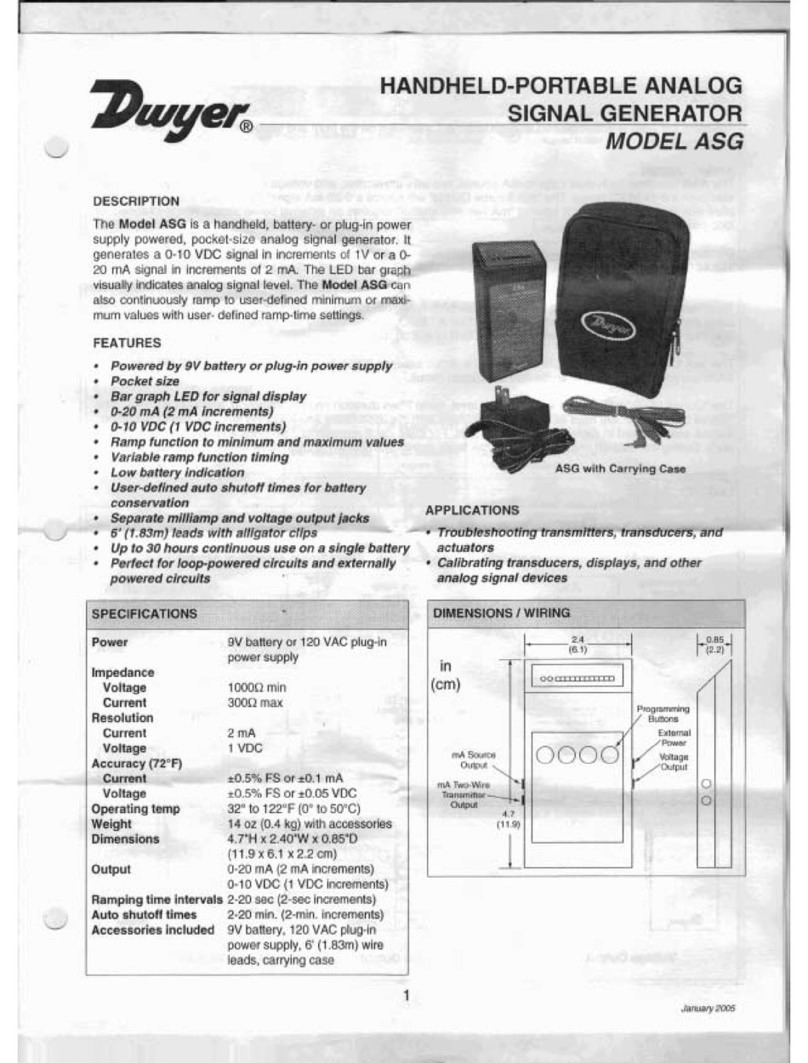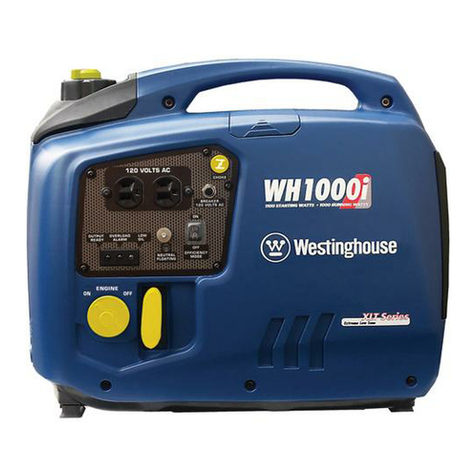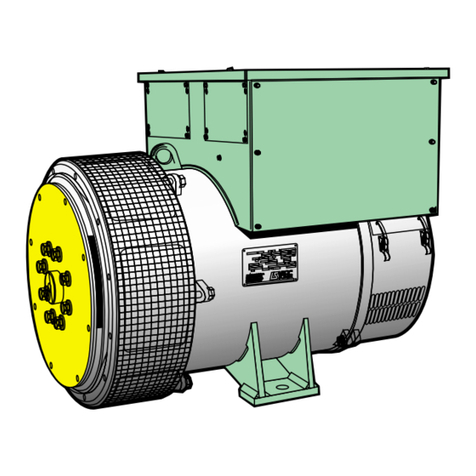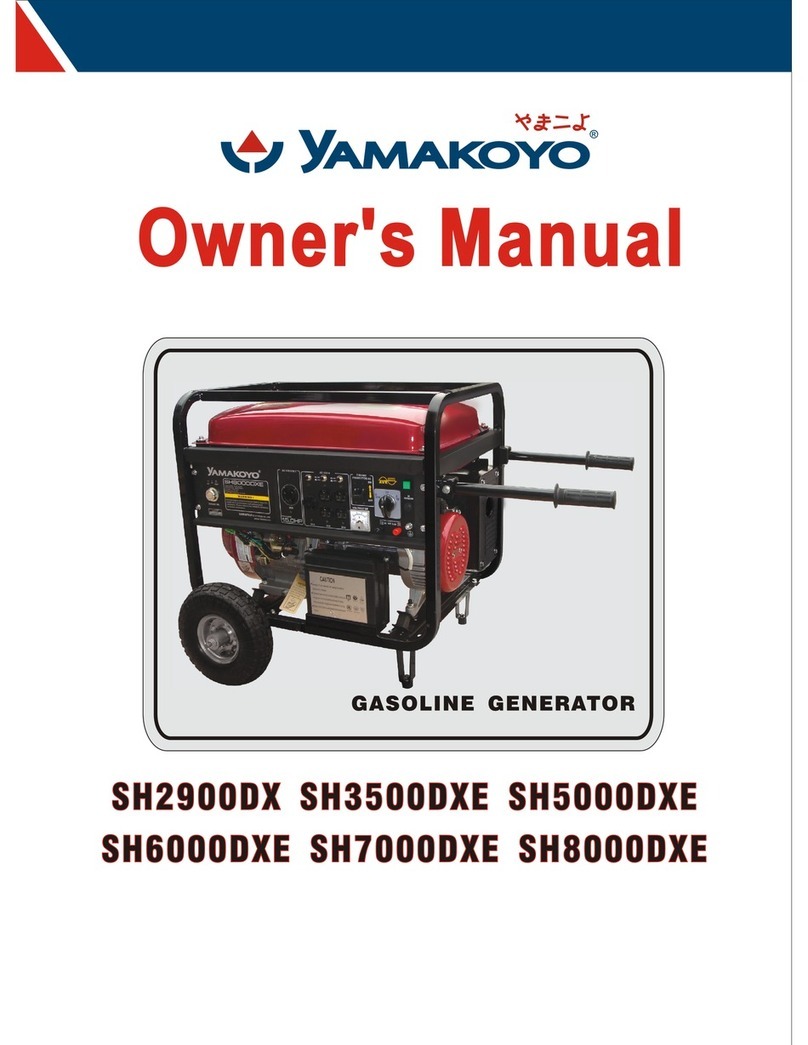” - . . . - . . - -
5. SAFETY- PRECAUTIONS
51
1)
2)
3)
4)
5)
6)
7)
8)
5-2
1)
3
5-3
1)
2)
3)
4)
FIRE PREVENTION
Keep the generator away from combustible materials during operation. Take special precautions with flammable sub-
stances.
Do not run the generator in a incline position or while it is slanted at an angle. Avoid moving the generator while it
is in operation to prevent the generator from falling over or leaking fuel.
Do not place a carton or similar object over the generator while the generator is running. If covered, cooling will be
diminished and causethe generator to overheat.
Operate the generator at least lm away from a building or wall.
Be sure to stop the engine before filling fuel into the fuel tank.
If fuel is filled while the engine is running, fuel vapors may rise from the fuel tank resulting in apotential fire hazard.
Fuel used in engine operation is very volatile and highly flammable. Take special precautions not to spill fuel when
filling the fuel tank. If fuel is spilt, wipe it off thoroughly and let dry before starting the engine.
Do not overfill the fuel tank and always be sure to fill iuel only up to the level specified at the fuel supply-port.
Do not smoke or useopen flame when filling the fuel tank.
PRECAUTIONS for EXHAUST GASES
Avoid operating the generator in poorly ventilated locations such as an office, warehouse. narrow tunnel. well, hold.
tank. etc.. If the generator is run continuously in such poorly ventilated areas.the operator may suffer carbon mono-
xide poisoning.
Always operate the generator with the exhaust port directed toward the open air or where good ventilation is assured.
OTHER PRECAUTtONS
To prevent electric shock. do not touch the generator with wet hands. For example, when the generator is usedto
drive a submersible pump, be sure to connect the earth cord of the generator to the earth cable of the pump.
Do not splash water over the generator during operation. And also avoid operating the generator in the rain. If the
generator getswet. it may fail to start or short-circuit. and the operator may possibly receive a severeelectric shock.
Do not connect the generator to existing power lines which havebeen originally installed asthe power supply system
of a building. If connected. the generator will burn out.
Avoid running the generator with its cover removed.
-7-
